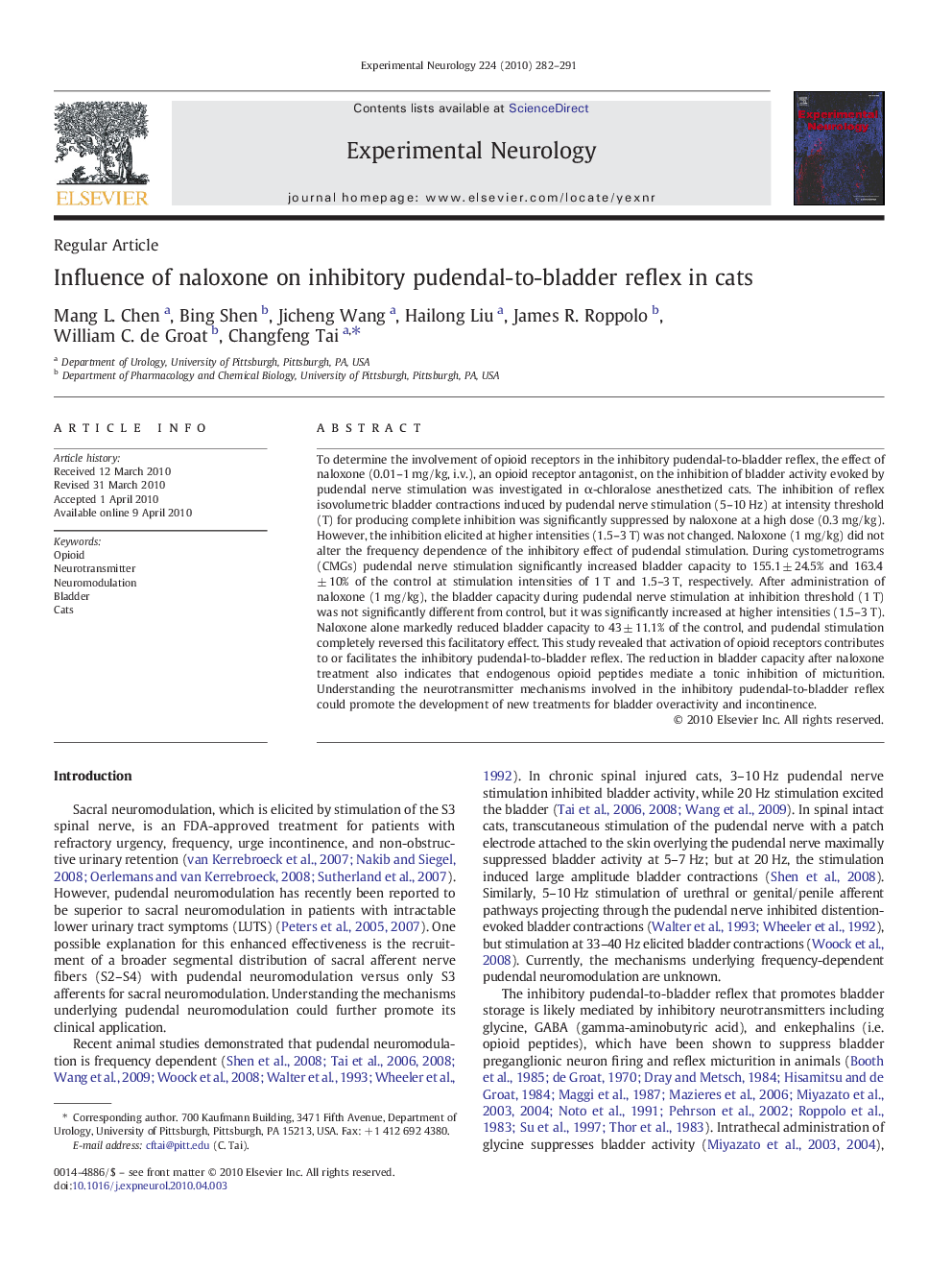| Article ID | Journal | Published Year | Pages | File Type |
|---|---|---|---|---|
| 3056164 | Experimental Neurology | 2010 | 10 Pages |
To determine the involvement of opioid receptors in the inhibitory pudendal-to-bladder reflex, the effect of naloxone (0.01–1 mg/kg, i.v.), an opioid receptor antagonist, on the inhibition of bladder activity evoked by pudendal nerve stimulation was investigated in α-chloralose anesthetized cats. The inhibition of reflex isovolumetric bladder contractions induced by pudendal nerve stimulation (5–10 Hz) at intensity threshold (T) for producing complete inhibition was significantly suppressed by naloxone at a high dose (0.3 mg/kg). However, the inhibition elicited at higher intensities (1.5–3 T) was not changed. Naloxone (1 mg/kg) did not alter the frequency dependence of the inhibitory effect of pudendal stimulation. During cystometrograms (CMGs) pudendal nerve stimulation significantly increased bladder capacity to 155.1 ± 24.5% and 163.4 ± 10% of the control at stimulation intensities of 1 T and 1.5–3 T, respectively. After administration of naloxone (1 mg/kg), the bladder capacity during pudendal nerve stimulation at inhibition threshold (1 T) was not significantly different from control, but it was significantly increased at higher intensities (1.5–3 T). Naloxone alone markedly reduced bladder capacity to 43 ± 11.1% of the control, and pudendal stimulation completely reversed this facilitatory effect. This study revealed that activation of opioid receptors contributes to or facilitates the inhibitory pudendal-to-bladder reflex. The reduction in bladder capacity after naloxone treatment also indicates that endogenous opioid peptides mediate a tonic inhibition of micturition. Understanding the neurotransmitter mechanisms involved in the inhibitory pudendal-to-bladder reflex could promote the development of new treatments for bladder overactivity and incontinence.
